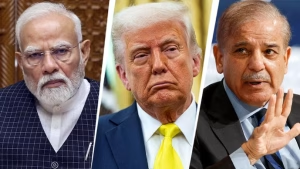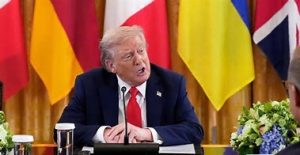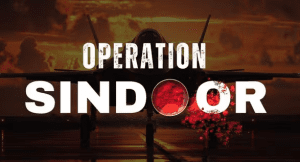Washington D.C. – US President Donald Trump has once again asserted his role in brokering the India Pakistan truce earlier this year, this time explicitly linking his intervention to tariff threats. Speaking from the White House, Trump claimed that his use of trade leverage prevented what could have escalated into a full-fledged war between the two nuclear-armed South Asian neighbors during their May military confrontation.
Trump’s Latest Claims on India Pakistan Truce
President Trump reiterated his claim that personal intervention stopped India and Pakistan from engaging in comprehensive warfare during their May conflict. However, in his latest statement, Trump specifically credited tariff threats as the decisive tool that brought both nations to agree to the India Pakistan truce announced on May 10.
“If I didn’t have the power of tariffs, you would have at least four of the seven wars raging… If you look at India and Pakistan, they were ready to go at it. Seven planes were shot down,” Trump stated, emphasizing how trade policy served as leverage in achieving the India Pakistan truce. His remarks positioned tariffs not merely as economic instruments but as diplomatic weapons capable of preventing military escalations.
Tariffs as Peacekeeping Tools


Trump argued that tariff authority provided the United States with unprecedented peacekeeping capabilities beyond traditional diplomatic channels. According to the President, threatening trade relations proved more effective than conventional mediation efforts in securing the India Pakistan truce and preventing broader regional conflict.
“Not only did we make hundreds of billions of dollars, but we’re a peacekeeper because of tariffs,” Trump declared, suggesting dual benefits from his trade-based diplomatic approach. The President maintained that tariff threats simultaneously generated economic gains for the United States while enabling intervention in international conflicts like the India Pakistan truce situation.
Trump declined to specify exact statements made to Indian and Pakistani leaders during negotiations for the India Pakistan truce. “I don’t want to say exactly what I said, but what I said was very effective,” he noted, maintaining strategic ambiguity about his precise diplomatic language while claiming credit for the ceasefire outcome.
Background: Operation Sindoor and Military Conflict


The India Pakistan truce followed intense military confrontation in May triggered by India’s Operation Sindoor. India launched the operation to target terror bases across Pakistan and Pakistan-occupied Kashmir, retaliating for the Pahalgam terror attack that killed 26 civilians on April 22. The military action represented significant escalation in India-Pakistan tensions with potential for broader conflict.
During the confrontation preceding the India Pakistan truce, aerial combat resulted in multiple aircraft being shot down. Trump referenced “seven planes were shot down” in his statement, highlighting the intensity of military engagement before the ceasefire. The conflict lasted approximately four days before the India Pakistan truce was announced on May 10, according to Trump’s timeline.
Trump’s Previous Claims About India Pakistan Truce
Last week, Trump had claimed he warned both India and Pakistan to end hostilities or face complete termination of trade relations with the United States. “India and Pakistan were going at it. I called them both… They had just shot down seven planes… I said, if you do this, there’s not going to be any trade, and I stopped the war. It was raging for four days,” Trump stated in his earlier version of events surrounding the India Pakistan truce.
These repeated claims about facilitating the India Pakistan truce represent Trump’s consistent narrative positioning himself as crucial mediator between the nuclear-armed neighbors. The President has made such assertions multiple times since the May ceasefire, each time emphasizing American intervention as decisive factor.
Pakistan Military Chief’s Alleged Praise
Trump cited praise from Pakistan’s military chief, Field Marshal Asim Munir, as validation of his role in achieving the India Pakistan truce. Referring to a recent White House meeting with Munir and Pakistani Prime Minister Shehbaz Sharif, Trump recounted the Pakistani military leader’s supposed commendation.
Also Read: Powerful: India Hits Back at Pakistan During Women Peace Security UN Debate
“He (Munir) said to a group of people that were with us… that this man (Trump) saved millions of lives because he saved the war from going on. That war was going to get very bad… I loved the way he said it,” Trump stated, suggesting the Pakistan military leadership credited him with preventing catastrophic escalation beyond the India Pakistan truce.
This alleged endorsement from Pakistan’s top military officer provided Trump with testimonial support for his intervention claims, though independent verification of Munir’s exact statements remains unavailable.
India’s Position on India Pakistan Truce
India has consistently maintained that the India Pakistan truce decision on May 10 was taken bilaterally between the two nations without external mediation. Indian officials have not publicly acknowledged Trump’s claimed intervention role in achieving the ceasefire, instead characterizing the India Pakistan truce as result of direct negotiations between New Delhi and Islamabad.
India’s position suggests that while the United States may have encouraged de-escalation, the actual India Pakistan truce terms and decision-making occurred through bilateral channels rather than American-brokered mediation. This narrative conflicts with Trump’s repeated assertions of decisive personal intervention.
Strategic Implications of Tariff Diplomacy
Trump’s linkage of the India Pakistan truce to tariff threats represents broader American strategy of using economic leverage for geopolitical objectives. The President’s approach suggests willingness to condition market access and trade relationships on foreign policy compliance, extending beyond traditional diplomatic toolkit.
If accurate, Trump’s tariff-based intervention in securing the India Pakistan truce would represent novel application of economic statecraft to conflict resolution between nuclear powers. However, the lack of independent confirmation from Indian or Pakistani officials raises questions about the precise nature and impact of American involvement.
Conclusion: Disputed Intervention Narrative
Trump’s claims about engineering the India Pakistan truce through tariff threats remain contested, with India asserting bilateral ceasefire decision-making. The President’s repeated emphasis on his intervention role reflects desire to demonstrate American influence and personal diplomatic achievements in preventing potential nuclear conflict between South Asian neighbors.

